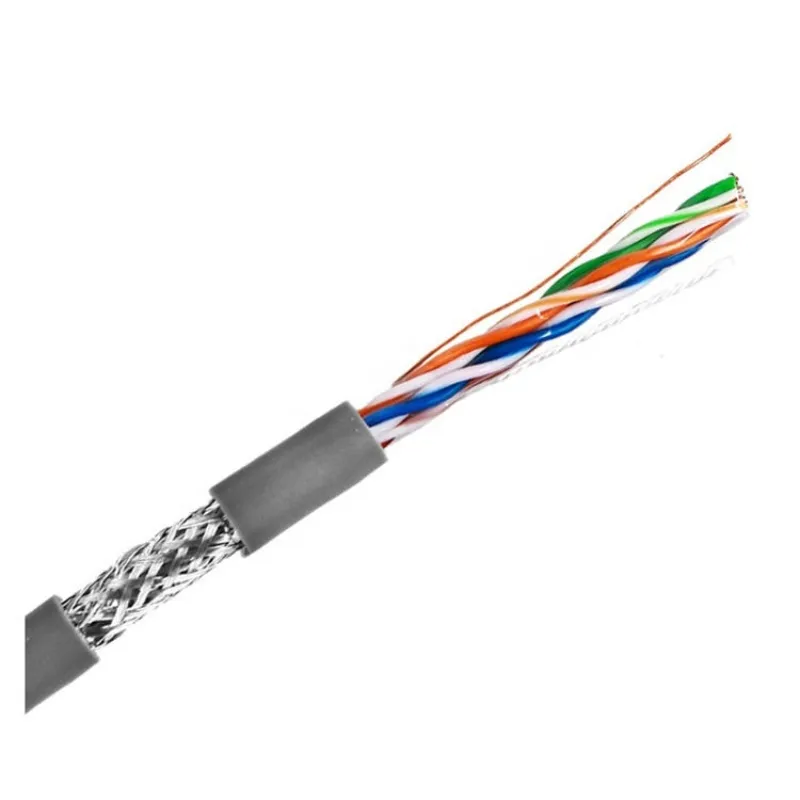Enhancing Connectivity with Advanced Cable Design
In modern network infrastructures, the choice of cable design plays a critical role in ensuring smooth and efficient data transmission. A drop cable, designed specifically for last-mile connectivity, bridges the gap between main distribution lines and the end-user’s location. Its construction is engineered to withstand environmental challenges while delivering stable, high-speed performance. Whether it’s for fiber-to-the-home (FTTH) applications, commercial networking projects, or smart city developments, the structural quality of a drop cable directly influences signal integrity and long-term reliability.
For businesses, internet service providers, and even governmental agencies, investing in a reliable drop cable system is no longer optional — it’s a necessity. As data consumption grows exponentially with streaming, cloud services, IoT devices, and remote work, having a well-constructed drop cable in place ensures that the network can handle current demands and adapt to future requirements.
Core Elements of Drop Cable Construction
Structural Strength and Durability
A well-built drop cable is designed to endure physical stress during installation and operation. This includes resistance to bending, pulling, and external pressure. Strength members, often made from steel wires or aramid yarn, reinforce the cable and protect the delicate fibers inside. This durability ensures that network performance remains stable even in challenging environments, from urban installations that require threading through tight spaces to rural deployments that face open-air exposure.
The tensile strength of a drop cable is particularly important when deployed aerially between poles. Without strong reinforcement, the cable could sag, stretch, or even snap under wind load or ice accumulation. Therefore, advanced manufacturing techniques ensure that drop cable maintains its integrity for years, even under mechanical stress.
Protective Outer Jacket
The outer jacket of a drop cable serves as the first line of defense against environmental hazards such as UV radiation, moisture, and abrasion. High-quality jackets made from polyethylene (PE) or low-smoke zero halogen (LSZH) materials provide not only durability but also compliance with safety standards, especially in indoor or high-density environments.
In coastal or humid areas, salt and moisture can cause corrosion or damage to cables. This is why drop cables for such environments often feature additional protective layers or water-blocking gels, ensuring longevity and consistent performance.

Impact on Network Efficiency
Reduced Signal Loss
One of the primary benefits of quality drop cable construction is minimized signal attenuation. Superior insulation, precise fiber alignment, and robust protective layers all contribute to maintaining strong signal strength over longer distances. In fiber optic drop cables, maintaining low optical loss is essential for ensuring high-quality internet connections without the need for excessive signal boosting.
Signal degradation can occur due to microbending and macrobending within the fiber core. This is why drop cables often feature advanced buffer designs that keep fibers straight and well-protected during both installation and operation.
Enhanced Data Transmission Speed
A properly designed drop cable supports higher bandwidth capabilities, making it ideal for modern applications that demand fast data transfer. With optimized core alignment and advanced manufacturing techniques, drop cables can handle the increasing demands of 4K/8K streaming, video conferencing, smart home devices, and real-time cloud processing without compromising speed.
Moreover, as telecom networks upgrade to support emerging technologies like 5G backhaul and edge computing, having a high-performance drop cable in place ensures that the infrastructure can handle heavy data traffic efficiently.
Installation Benefits of Drop Cable Design
Flexible Deployment Options
The design of a drop cable allows for a variety of installation methods, including aerial, direct burial, façade mounting, and conduit placement. This flexibility means network providers can adapt to different terrains and infrastructures without compromising performance. The cable’s light weight and small diameter simplify handling during installation, reducing both labor costs and project timelines.
Some drop cables are also available with self-supporting designs that include an integrated messenger wire, eliminating the need for separate suspension hardware. This makes installation even faster and more cost-effective.
Simplified Connectorization
Drop cables are often constructed to support quick connectorization, reducing labor time and the risk of installation errors. Pre-terminated drop cables with factory-installed connectors can be deployed in minutes, while field-installable connectors allow technicians to customize lengths on-site.
This reduction in splicing and complex terminations not only speeds up deployment but also improves network reliability by reducing the number of potential failure points.
Environmental Resistance and Reliability
Weatherproof Performance
A high-quality drop cable is engineered to maintain performance under varying weather conditions. Whether it’s heavy rain, snow, intense heat, or freezing temperatures, the cable’s protective materials ensure consistent data transmission. For outdoor installations, water-blocking technology and rodent-resistant jackets further improve reliability.
Weatherproofing is especially important in regions prone to natural disasters. A resilient drop cable can withstand flooding or windstorms, ensuring that critical communication services remain operational.
Protection Against Physical Damage
In addition to environmental threats, drop cables are built to withstand accidental impacts, construction work interference, and even damage caused by animals like squirrels or birds. Reinforced jackets, armored layers, and durable strength members protect the internal fibers, making them suitable for deployment in both high-traffic urban areas and remote rural locations.
Long-Term Cost Efficiency
Lower Maintenance Requirements
Thanks to its durability and resistance to damage, a drop cable reduces the frequency and cost of repairs. Over the lifespan of a network, fewer service calls translate into significant operational savings for service providers. Additionally, the stable performance of a well-constructed drop cable minimizes customer complaints and downtime, which directly impacts user satisfaction.
Future-Ready Design
Drop cables are often designed with scalability in mind, supporting upgrades to higher bandwidths without the need for complete cable replacement. This means that as demand for faster internet speeds grows, service providers can upgrade the network without extensive infrastructure changes.
Role in Fiber-to-the-Home and Other Applications
Residential Connectivity
For FTTH networks, the drop cable is a critical component that delivers high-speed internet directly to homes. It ensures strong signal quality over the last stretch of the network, which is often the most vulnerable to interference or signal loss.
As smart home adoption increases, more devices depend on reliable connectivity — from streaming services to home security systems. A robust drop cable ensures these systems function without interruption.
Commercial and Industrial Applications
Beyond residential use, drop cables are deployed in commercial buildings, industrial complexes, and even outdoor facilities like oil rigs and wind farms. Their rugged design ensures that they can handle demanding environments while delivering consistent connectivity.
Emerging Innovations in Drop Cable Technology
Integrated Microduct Solutions
Modern drop cables are increasingly designed to integrate with microduct systems, making installation faster and enabling easy upgrades. This approach is particularly useful in dense urban environments, where civil works for new cabling are costly and disruptive.
Enhanced Fiber Protection
Innovations such as bend-insensitive fibers, improved coating technologies, and gel-free water-blocking layers are helping drop cables deliver better performance while being easier to handle during installation.
FAQ
What makes drop cable different from standard fiber optic cable?
Drop cable is specifically designed for the last segment of a network, offering enhanced durability, flexibility, and environmental resistance for direct connections to end-users.
Can drop cable be installed outdoors without additional protection?
Yes, most drop cables have weather-resistant jackets and are built to withstand outdoor conditions, but proper installation practices should still be followed.
How does drop cable construction improve long-term efficiency?
Its strong materials, precise fiber alignment, and environmental resistance reduce maintenance costs and ensure stable high-speed performance over time.
Is drop cable suitable for both residential and commercial networks?
Absolutely, drop cables are widely used in both settings due to their reliability, flexibility, and capacity to support high-bandwidth applications.
Table of Contents
- Enhancing Connectivity with Advanced Cable Design
- Core Elements of Drop Cable Construction
- Impact on Network Efficiency
- Installation Benefits of Drop Cable Design
- Environmental Resistance and Reliability
- Long-Term Cost Efficiency
- Role in Fiber-to-the-Home and Other Applications
- Emerging Innovations in Drop Cable Technology
- FAQ

